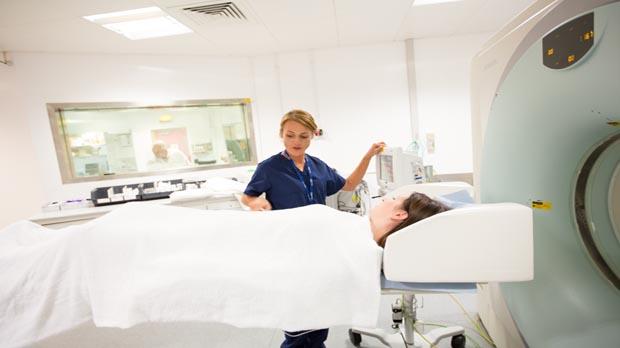
Last year in the UK over 60,000 cancer patients enrolled on clinical trials aimed at improving cancer treatments and making them available to all.
This trial looked at nivolumab on its own or with another drug called ipilimumab. It was for people with cancer that had spread:
This trial was open for people to join between 2013 and 2015. These results were published in 2016.
Nivolumab and ipilimumab are types of targeted cancer drug called monoclonal antibodies. These drugs aim to seek out cancer cells by looking for particular proteins.
At the time this trial was done doctors already used ipilimumab to treat some people with melanoma skin cancer. Nivolumab was a treatment for different types of cancer.
The aims of this trial were to find out:
The trial team found that nivolumab on its own and in combination with ipilimumab worked well for people with small cell lung cancer (SCLC).
Nivolumab on its own worked well for people with a cancer of the urinary tract that had spread. The urinary tract consists of the:
Nivolumab on its own and in combination with ipilimumab worked well for people with gastro oesophageal cancer. This included:
They said there should be further trials of nivolumab in these cancer types.
About this trial
This was a phase 1/2 trial.
Results for Small Cell Lung Cancer (SCLC)
216 people with SCLC took part.
At the start of the trial 3 people had a low dose of nivolumab with a low dose of ipilimumab. This was to make sure the combination of nivolumab and ipilimumab was acceptable and safe for people with SCLC.
The results provided here are for the other 213 people who were in 3 groups.
Everyone was followed up for at least 12 weeks.
The team looked at how well the treatment worked for people in each group. This included people where there was no sign of their cancer (a complete response) and people whose cancer had shrunk (a partial response).
They found it was:
Across all 3 groups the time it took for treatment to work was from just under 2 months (1.4 months) to just over 2 months (2.1 months).
The team looked at the overall  time people lived. They found it was:
time people lived. They found it was:
The team also looked at the median time people lived before their cancer started to get worse. They found it was:
Side effects
The team looked at the number of people in each group who had bad to severe side effects. They found it was:
 worked
worked Conclusion for small cell lung cancer
The team concluded that nivolumab on its own and nivolumab with ipilimumab worked well and the side effects were manageable.
They say these results suggest that this could be another choice of treatment for people with few options. And to further look at these treatments in a randomised phase 3 clinical trial.
Results for urinary tract cancer
86 people agreed to take part in the nivolumab on its own part of the trial. 78 people had at least 1 dose of nivolumab.
These 78 people were followed up for at least 9 months.
The team looked at how well the treatment worked. They found that for:
 length of time it took for treatment to work was 1½ months.
length of time it took for treatment to work was 1½ months.
The median length of time people lived was just over 9½ months (9.7).
The median length of time people lived without a sign of their cancer getting worse was just over 2½ months (2.8).
Side effects
Of the 78 people, 17 (22%) had bad to severe side effects.
The side effects included:
 ) causing breathlessness
) causing breathlessnessConclusion for urinary tract cancer
The trial team concluded that nivolumab:
And these results support further research of nivolumab as a treatment for these people.
Results for gastro oesophageal cancer
160 people with gastro oesophageal cancer took part. This was open to people who had already had chemotherapy but it had stopped working.
The  follow up for each group was about 2 years.
follow up for each group was about 2 years.
After a year the trial team looked at the number of people who were still alive and their cancer had not got any worse. They found it was:
Side effects
The team looked at how many people in each group had severe to very severe side effects. They found that it was:
Conclusions for gastro oesophageal cancer
The trial team concluded that for these people nivolumab on its own and in combination with ipilimumab:
There is now a phase 3 trial going on to look at these treatments for people with gastro oesophageal cancers.
Where this information comes from
We have based this summary on information from the research team. The information they sent us has been reviewed by independent specialists ( ) and published in a medical journal. The figures we quote above were provided by the trial team who did the research. We have not analysed the data ourselves.
) and published in a medical journal. The figures we quote above were provided by the trial team who did the research. We have not analysed the data ourselves.
Please note: In order to join a trial you will need to discuss it with your doctor, unless otherwise specified.
Professor Jeff Evans
Bristol-Myers Squibb
NIHR Clinical Research Network: Cancer
If you have questions about the trial please contact our cancer information nurses
Freephone 0808 800 4040

Last year in the UK over 60,000 cancer patients enrolled on clinical trials aimed at improving cancer treatments and making them available to all.